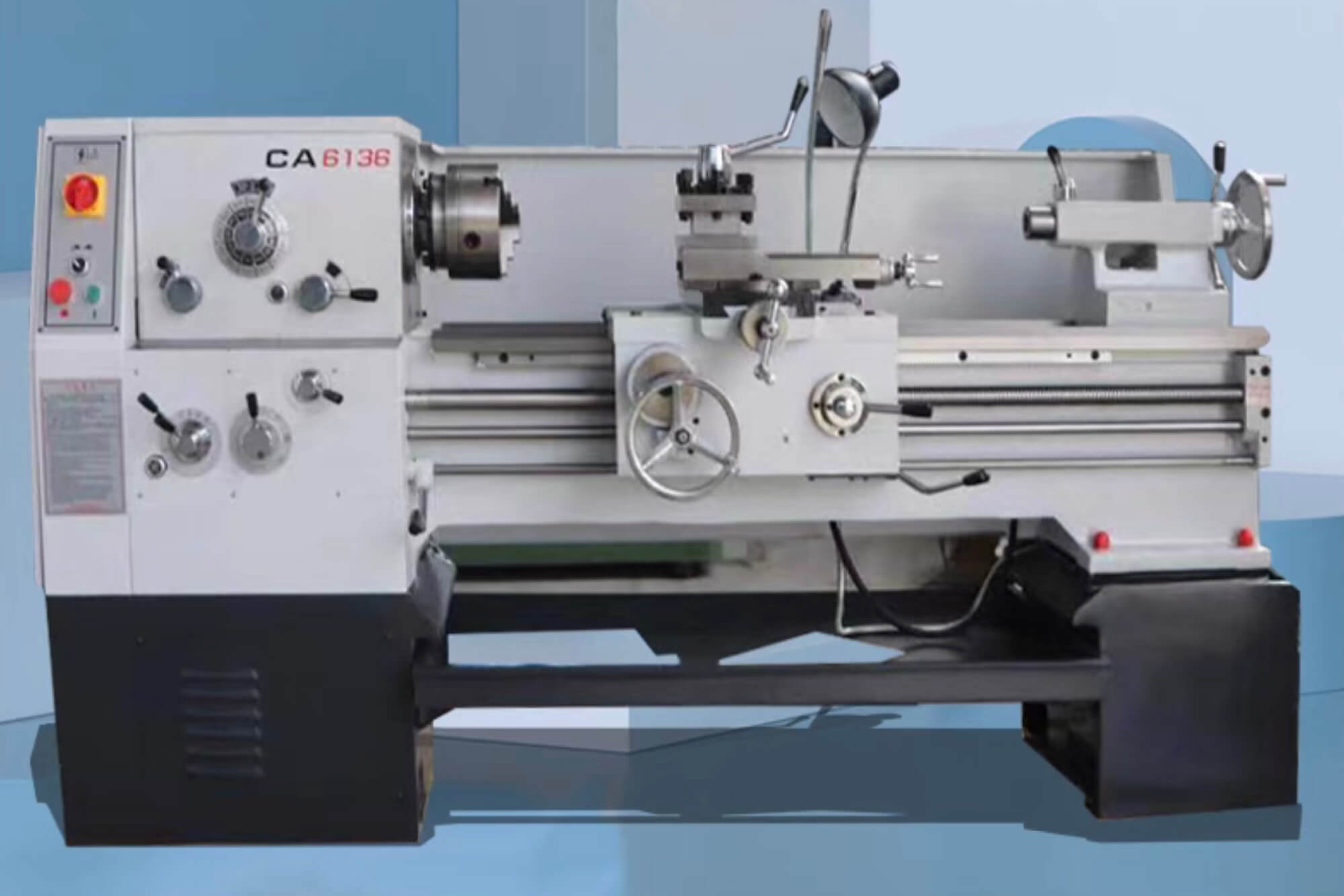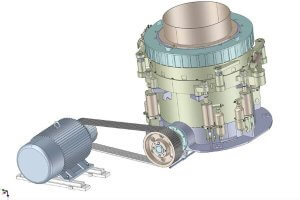I. Introduction
Lathes are one of the most versatile tools in any workshop. Whether you’re crafting a wooden bowl, turning a precision metal part, or experimenting with CNC designs, lathe projects allow you to bring your ideas to life. Over the years, I’ve explored various lathe projects and discovered that they’re not only practical but also deeply creative. In this guide, I’ll take you through the exciting world of lathe projects, breaking down ideas for beginners and seasoned professionals alike. We’ll also touch on how CNC technology elevates traditional lathe work. Let’s dive in!
Lathe projects are more than just tasks—they’re opportunities to express creativity, solve engineering challenges, and refine craftsmanship. Whether you’re a professional machinist or a hobbyist, there’s always something new to learn and try. From my early days of turning simple wooden pens to crafting intricate CNC metal components, I’ve found that each project brings a mix of satisfaction and skill-building.
II. Understanding Lathe Types
Manual Lathe vs. CNC Lathe
When exploring lathe projects, understanding the tools you’re working with is essential. Manual lathes are hands-on, giving you full control over every movement. CNC lathes, on the other hand, rely on precise programming to execute intricate designs. Both have their place in lathe projects, depending on your goals.
| Feature | Manual Lathe | CNC Lathe |
|---|---|---|
| Control | Fully manual | Computer-programmed |
| Precision | Limited by operator skill | Extremely precise |
| Speed | Slower | Faster for complex tasks |
| Best for | Simple to moderate designs | Intricate, repeatable designs |
| Learning Curve | Easier | Steeper due to programming |
Manual lathes are often the first choice for beginners because they’re easier to learn and offer a direct connection to the material. For instance, I’ve spent hours practicing hand-feeding tools to create smooth finishes. It’s a tactile, rewarding experience. On the other hand, CNC lathes are unbeatable for high-precision or repeatable tasks, such as manufacturing intricate components.
Specialized Lathe Types
Beyond manual and CNC lathes, there are also specialty lathes tailored for specific applications:
- Wood Lathes: Designed exclusively for turning wood.
- Turret Lathes: Ideal for repetitive production tasks.
- Vertical Lathes: Best for large, heavy workpieces.
Understanding these options can help you select the right lathe for your projects, maximizing both efficiency and creativity.
III. Lathe Project Ideas
Beginner-Friendly Projects
Starting out with lathe projects can feel overwhelming, but simple projects build your skills quickly. Here are some ideas:
- Wooden Pen: A straightforward project that lets you experiment with smooth finishes.
- Candle Holder: Perfect for practicing symmetry.
- Basic Metal Cylinder: Ideal for learning basic turning techniques.
For example, creating a wooden pen helped me understand material handling and the importance of tool sharpness. It’s a quick project that delivers immediate satisfaction. Moreover, it’s a great way to get accustomed to lathe setup and safety procedures.
Intermediate Projects
Once you’re comfortable, you can explore more challenging lathe projects:
- Wooden Bowl: A step up in complexity, requiring hollowing techniques.
- Threaded Components: Master threading for practical applications.
- Decorative Table Legs: Combine function with aesthetic appeal.
These projects require greater precision and introduce advanced techniques like thread cutting or hollowing. I vividly remember turning my first wooden bowl—it was both intimidating and exciting. The process taught me patience and the importance of consistent tool angles.
Advanced Projects
For seasoned professionals, advanced lathe projects test precision and creativity:
- Precision Metal Shafts: Essential for engineering purposes.
- Custom CNC Designs: Push boundaries with intricate G-code programming.
- Artistic Sculptures: Showcase your skills with unique designs.
Advanced projects often involve tight tolerances and complex geometries. For instance, crafting precision metal shafts for a robotic arm challenged my measurement and alignment skills. Similarly, designing artistic sculptures on a CNC lathe lets you combine engineering with artistry.
| Skill Level | Project Idea | Key Learning Outcome |
|---|---|---|
| Beginner | Wooden Pen | Finishing techniques |
| Intermediate | Threaded Components | Thread cutting and symmetry |
| Advanced | Custom CNC Designs | G-code programming |
IV. CNC Lathe Projects
What is CNC Lathe Technology?
CNC (Computer Numerical Control) lathes transform traditional lathe projects by enabling high-precision, automated designs. By programming the lathe, you can create intricate shapes with repeatability that’s impossible to achieve manually.
For example, a CNC lathe can cut complex curves or threads with ease, making it indispensable for modern manufacturing. I remember transitioning from manual to CNC lathes—it was a game-changer. The ability to input precise measurements and let the machine do the work opened up a world of possibilities.
Examples of CNC Lathe Projects
- Custom Knobs and Handles: Useful in furniture-making and interior design.
- Prototyping Mechanical Parts: Ideal for engineering and robotics applications.
- Jewelry Components: Combine creativity with precision for one-of-a-kind pieces.
Software Tools for CNC Lathe
When I first started with CNC lathes, I used tools like Fusion 360 and SolidWorks. These software programs make designing and programming CNC lathe projects straightforward.
| Software Tool | Purpose | Best For |
|---|---|---|
| Fusion 360 | CAD/CAM Design | Beginners and professionals |
| SolidWorks | Advanced CAD modeling | Complex engineering designs |
| Easel | Simple CNC projects | Hobbyists and DIYers |
Tips for CNC Lathe Success
- Choose the Right Material: Always match your material to the project’s requirements.
- Optimize G-Code: Efficient programming reduces production time.
- Test on Scrap: Before committing to expensive materials, test your design on scraps to fine-tune the process.
I’ve learned the hard way that testing on scrap can save both time and frustration. Early in my CNC journey, I skipped this step and ended up ruining an expensive aluminum piece due to a programming error.
V. Tools and Techniques
Essential Tools for Lathe Projects
No lathe project is complete without the right tools. Here’s my essential list:
- Cutting Tools: Including parting tools, boring bars, and turning tools. Each serves a unique function, from slicing materials to hollowing designs.
- Measuring Equipment: Tools like calipers and micrometers ensure precision, helping you achieve exact dimensions for your projects.
- Lathe Chucks and Jaws: These secure your material, and choosing the right type—three-jaw, four-jaw, or collet—can make a significant difference in stability.
- Tool Sharpeners: A sharp tool enhances the finish and reduces effort. Investing in a reliable sharpening system can transform your workflow.
Safety Guidelines
Safety is non-negotiable when working with lathes. Following these steps can prevent accidents:
- Always Wear Protective Gear: Goggles, gloves, and ear protection shield you from flying debris and noise damage.
- Secure Clothing and Hair: Loose items can get caught in the spinning lathe.
- Inspect Your Setup: Ensure tools are tightly secured, and the lathe is properly calibrated before turning it on.
- Never Leave a Running Lathe Unattended: Even a moment of distraction can lead to damage or injury.
One mistake I made early on was neglecting to wear ear protection. After a few long sessions, my ears were ringing, teaching me the hard way about noise-induced damage.
Time-Saving Tips
Efficiency in lathe projects often comes down to preparation and maintenance. Here are some tips:
- Use Templates: Pre-made templates guide your cuts, saving time on measurements.
- Organize Tools: Keeping tools within reach reduces downtime.
- Maintain Sharp Tools: Dull tools slow you down and produce rough finishes. Regular sharpening keeps your work smooth and efficient.
- Practice Setup Optimization: Spend time setting up your lathe correctly to avoid rework or errors later in the process.
In my experience, investing time in preparation pays dividends during execution. For instance, using pre-aligned jigs for repetitive tasks has significantly cut my production time.
VI. Industry Trends and Inspirations
Emerging Lathe Technologies
The world of lathes is continually advancing, offering exciting possibilities for hobbyists and professionals alike. Some of the most impactful trends include:
- Hybrid Lathes: Combining manual and CNC capabilities, hybrid lathes provide the best of both worlds. You can switch between precise programming and hands-on adjustments seamlessly.
- Smart Lathes: Incorporating IoT (Internet of Things) technology, these machines offer real-time monitoring and diagnostics, reducing downtime and improving productivity.
- Eco-Friendly Practices: Sustainable materials like bamboo and recycled metals are becoming increasingly popular in lathe projects, aligning with global green initiatives.
- Automated Tool Changers: For CNC lathes, tool changers allow for quicker transitions between cuts, improving efficiency for complex designs.
These innovations are not just for large-scale industries. I’ve seen small workshops adopt smart lathes to optimize their workflows, proving that these technologies are accessible to all.
Success Stories
Inspiration can often be found in the journeys of others. One such story that resonates with me is a woodworker who started with a single manual lathe in his garage. By focusing on creating custom furniture legs, he gradually expanded his business, eventually adding CNC lathes to handle intricate designs. Today, his products are featured in boutique furniture stores across the country.
Another compelling example is a machinist who used CNC lathes to prototype mechanical parts for renewable energy solutions. His precision and creativity not only advanced his career but also contributed to the development of eco-friendly technologies.
Lathe Communities and Sharing Ideas
Being part of a community is invaluable for staying updated and inspired. Online forums, social media groups, and local maker meetups provide platforms to share techniques, troubleshoot challenges, and showcase your work. For me, Reddit’s r/woodworking and Instagram hashtags like #LatheProjects have been treasure troves of information and motivation.
VII. Resources
Online Tutorials and Courses
I’ve found YouTube to be a goldmine for learning lathe techniques. For structured learning, platforms like Udemy and Coursera offer excellent courses.
Community Forums
Engaging with communities like Reddit’s r/woodworking or machining forums can provide advice and inspiration for your lathe projects.
Downloadable Templates
Download ready-to-use project templates to get started quickly. Whether it’s a pen design or a bowl blueprint, templates save time.
| Resource | Type | Best For |
|---|---|---|
| YouTube | Video tutorials | Quick learning |
| Udemy | Structured courses | Comprehensive skill-building |
| Reddit r/woodworking | Community forum | Sharing tips and ideas |
VIII. Conclusion
Lathe projects are a fantastic way to blend creativity with practicality. Whether you’re using a manual lathe for hands-on fun or a CNC lathe for precision engineering, the possibilities are endless. I encourage you to start small, experiment, and enjoy the process of transforming ideas into real creations.
FAQ
- What is the best lathe for beginners?
A small benchtop lathe like the JET JWL-1015 is a great starting point. - Can CNC and manual lathe techniques be combined?
Yes, hybrid workflows allow for creative flexibility and precise automation. - What materials work best for lathe projects?
Wood, aluminum, brass, and even acrylic are popular choices. - What safety precautions should I take?
Always wear goggles and gloves, secure loose clothing, and ensure proper ventilation. - How do I maintain my lathe?
Regularly clean the machine, lubricate moving parts, and check for wear and tear. - What tools are essential for lathe projects?
Cutting tools, calipers, micrometers, and safety gear are must-haves. - How do I avoid common mistakes in lathe projects?
Start with simple designs, double-check measurements, and maintain sharp tools. - Can I use recycled materials for lathe projects?
Yes, many projects can incorporate recycled wood or metal for sustainable crafting. - What are some beginner CNC lathe projects?
Start with simple shapes like knobs, handles, or coasters. - How can I improve my lathe project finishes?
Use fine sandpaper, polish, and practice steady tool control. - Is a lathe suitable for mass production?
CNC lathes are ideal for producing multiple identical items. - What is the cost of a good lathe?
Beginner lathes start around $500, while professional CNC models can exceed $10,000. - How long does it take to complete a project?
Simple projects can take a few hours, while advanced ones may span days. - What types of wood are best for turning?
Hardwood like maple, walnut, or cherry provides excellent results. - Where can I find design inspiration for lathe projects?
Online forums, Pinterest, and woodworking magazines are great sources.
Other Articles You Might Enjoy
- Harbor Freight Lathe: A Beginner’s Guide to Machining Basics
Introduction: Why Choose a Harbor Freight Lathe? I remember the first time I wanted to try my hand at metalworking. I didn’t have a huge budget, and I needed a…
- What is a Lathe and How is it Used
What is a Lathe and Why is it Important? What is a Lathe? A lathe is one of the oldest and most versatile machine tools used in manufacturing and production…
- Using Lathe Tools for Complex CNC Machining Parts
In CNC machining, precision and efficiency are crucial. For engineers working on complex parts, choosing the right lathe tools is essential. When dealing with intricate shapes, deep holes, or thin-walled…
- What is a Turret Lathe? Comprehensive Guide for Beginners and Professionals
Introduction to Turret Lathe If you’ve ever worked in manufacturing or machining, you’ve likely come across the term turret lathe. This machine, known for its versatility and efficiency, bridges the…
- Is Grizzly Lathe the Right Choice for Your CNC Needs
In the world of machining, selecting the right lathe for your projects can be a crucial decision, especially if you're considering a versatile tool like the Grizzly lathe. This machine…
- JET Lathe Models for CNC: A Complete Selection Guide
In the world of CNC machining, the right lathe model can make all the difference. For many users, JET lathes offer a blend of reliability, precision, and durability. However, with…
- Choosing a Lathe Chuck for CNC: Essential Tips and Techniques
Introduction to Lathe Chucks in CNC Machining In CNC machining, the lathe chuck plays an indispensable role in holding and securing workpieces for accurate and efficient production. The lathe chuck’s…
- Innovative CNC Machining for the Future of Transportation
Introduction: A Brief Overview of CNC Machining and its Role in Manufacturing CNC machining, also known as Computer Numerical Control machining, is a manufacturing process that uses pre-programmed computer software…
- CNC Machining of Biodegradable Materials for Sustainable Manufacturing
Introduction to CNC Machining and Sustainable Manufacturing CNC machining stands as a pivotal technology in modern manufacturing, utilizing computer-controlled processes to precisely shape materials. This method not only enhances efficiency…









